In May 1961, President John F. Kennedy committed the nation to landing a man on the Moon and returning him safely to the Earth. After the establishment of the Manned Spacecraft Center (MSC), now NASA’s Johnson Space Center (JSC) in Houston, the agency needed facilities to train astronauts for current and future missions. The Mission Simulation and Training Facility (MSTF), located in Building 5, was initially designed to support Gemini and Apollo mission training, and over the years has adapted to support Skylab, space shuttle, space station, and future programs. When it first opened in the 1960s, Building 9 served as a home for the Technical Services Division. With the advent of the space shuttle program in the 1970s, it became a facility for astronaut training, a role it continues to play today as the Space Vehicle Mockup Facility (SVMF).
Mission Simulation and Training Facility (MSTF)
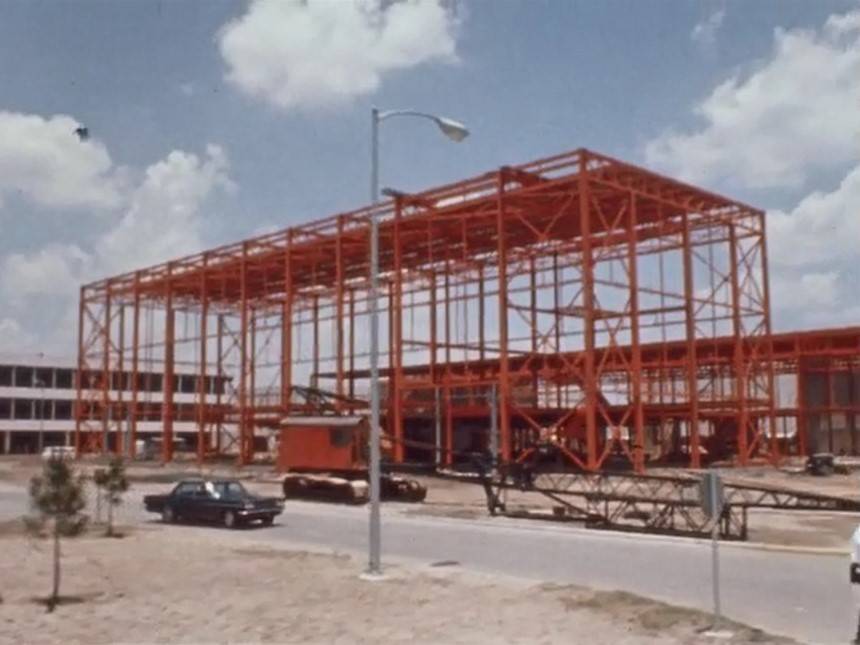
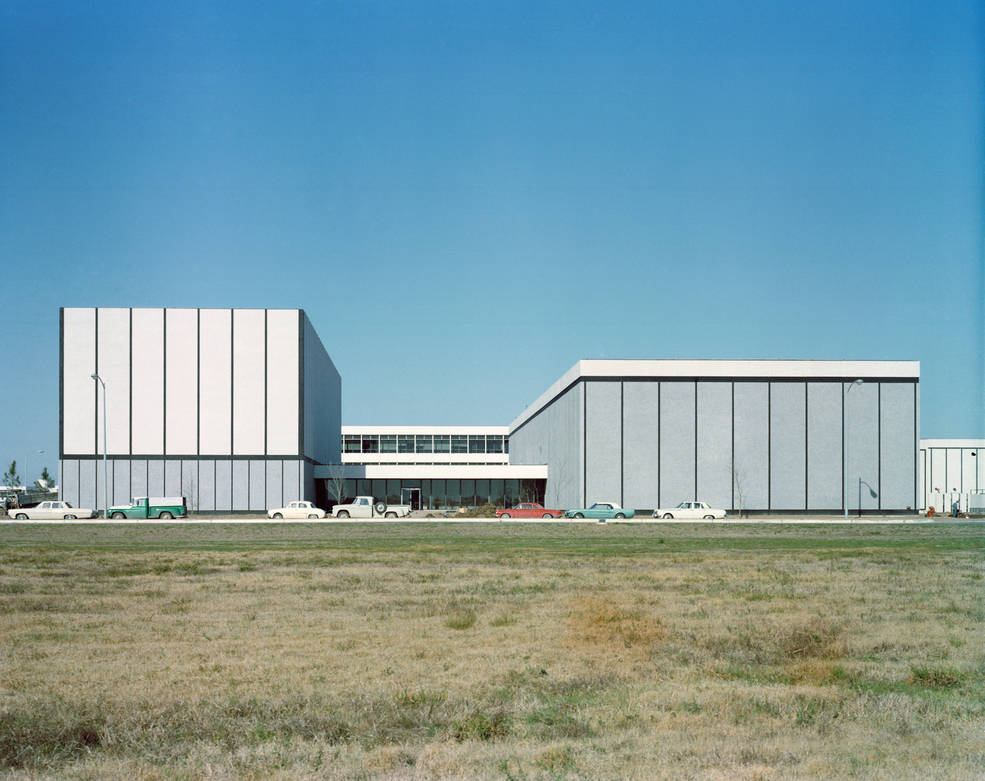
Left: Building 5 under construction June 1964. Right: Building 5 November 1964.
Construction of MSC’s Building 5, the Mission Simulation and Training Facility (MSTF), occurred between January 1964 and April 1965. As originally designed, the north wing contained simulators for both Project Gemini and the Apollo Program while the south wing held the Gemini Translation and Docking Simulator.
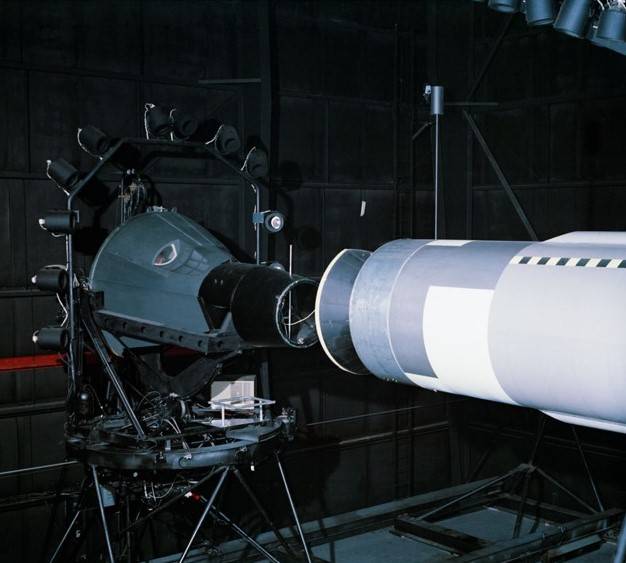
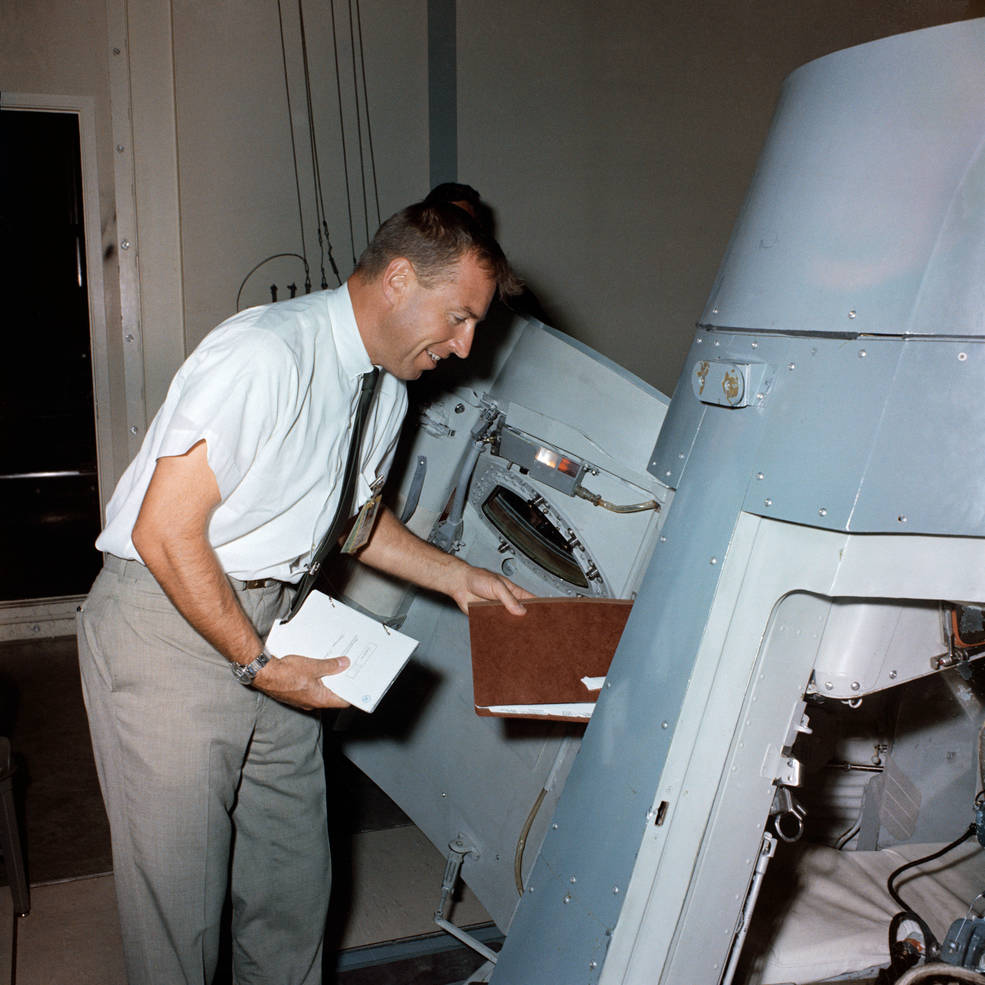
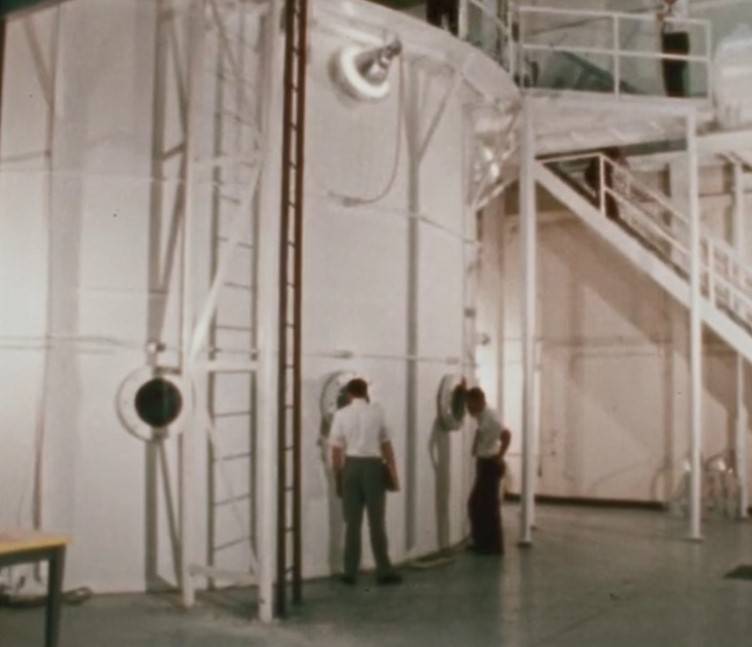
Left: The Gemini Translation and Docking Simulator shown in Building 5 in March 1965.
Middle: Astronaut James A. Lovell about to enter the Gemini Mission Simulator in September 1966.
Right: The Water Immersion Facility in Building 5 in June 1967.
The Gemini Mission Simulator arrived at MSC in August 1964, and was initially installed in Building 4, the Flight Crew Operations Building, before transfer to Building 5 after its completion. The simulator became operational to support the training of astronauts James A. McDivitt and Edward H. White for their June 1965 Gemini IV mission. Since that time, simulators in the MSTF have supported all NASA human spaceflight programs. The Translation and Docking Simulator, used to train Gemini crews for docking with the Agena target vehicles, was first installed in Building 260 before being transferred to Building 5 upon its completion.
.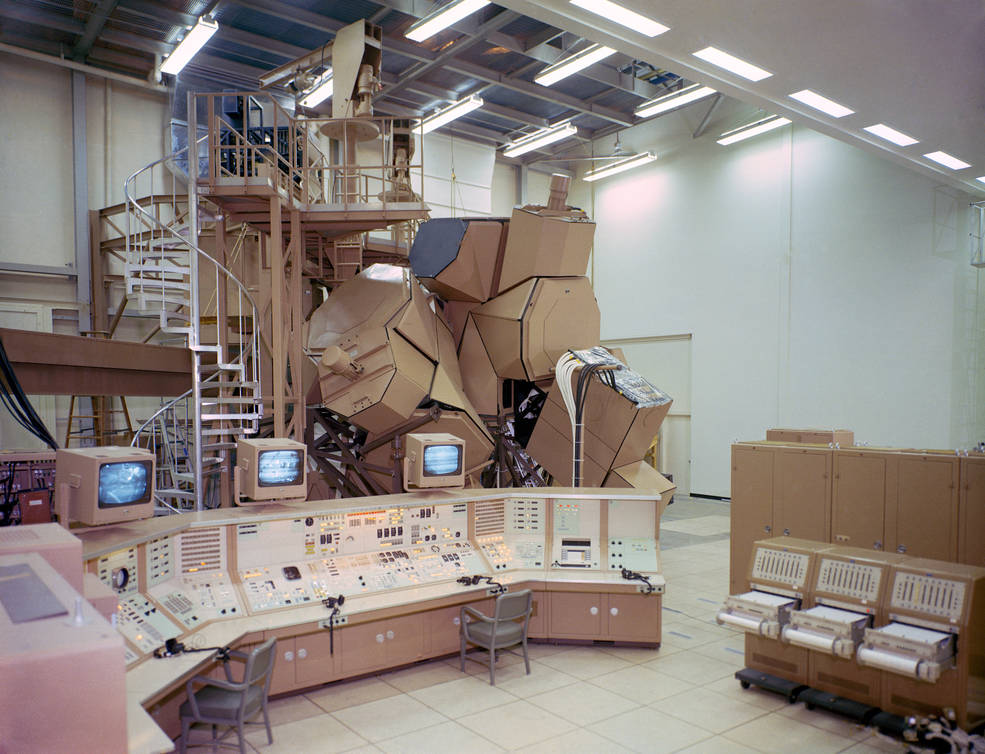
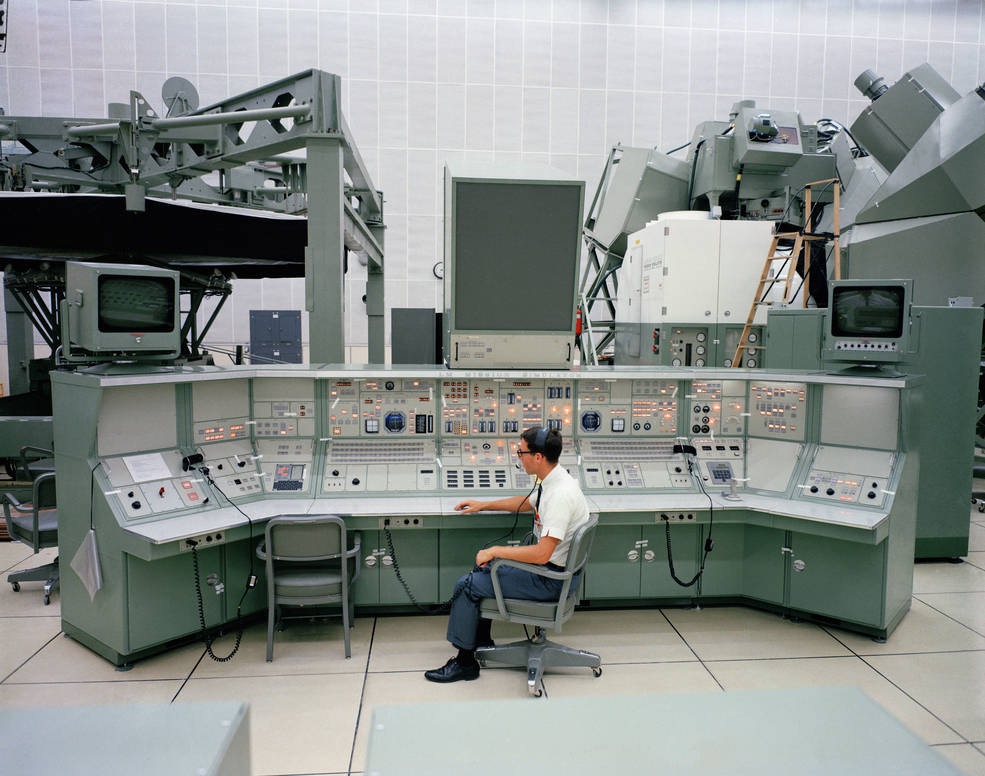
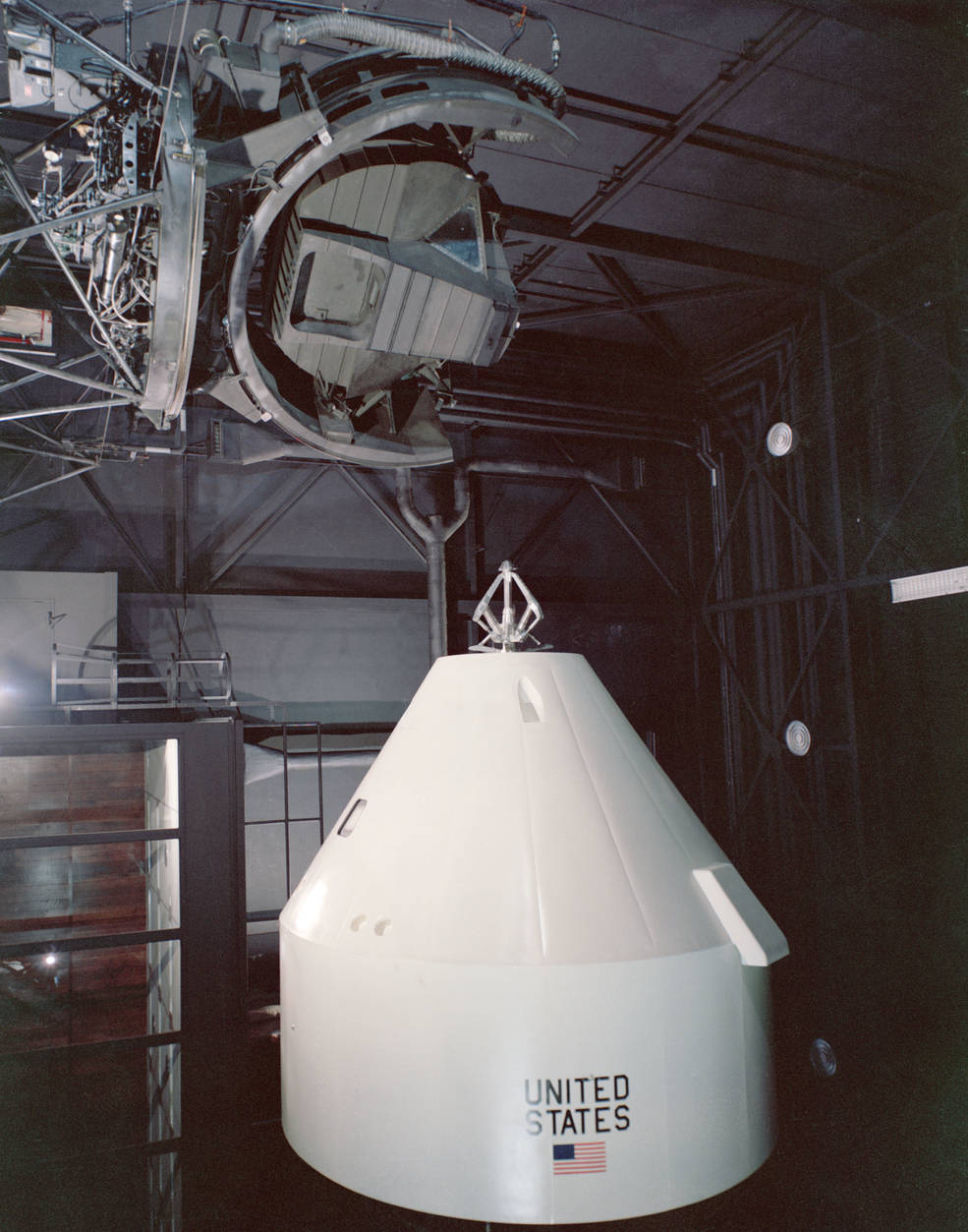
Left: The Apollo Command Module Simulator in 1965. Middle: The Apollo Lunar Module
Simulator in 1967. Right: The Apollo Translation and Docking Simulator in 1967.
In 1966, at the end of Project Gemini, the Gemini-related simulators were removed from the MSTF. The Apollo mission simulators, the first of which was delivered to MSC in December 1965, included a Command Module Simulator, a Lunar Module Simulator, and the Translation and Docking Simulator modified from its use during Project Gemini. In 1967, workers installed a Water Immersion Facility (WIF) in the east end of the north wing, used by astronauts for spacewalk training. The WIF was relocated to Building 260 in 1978.
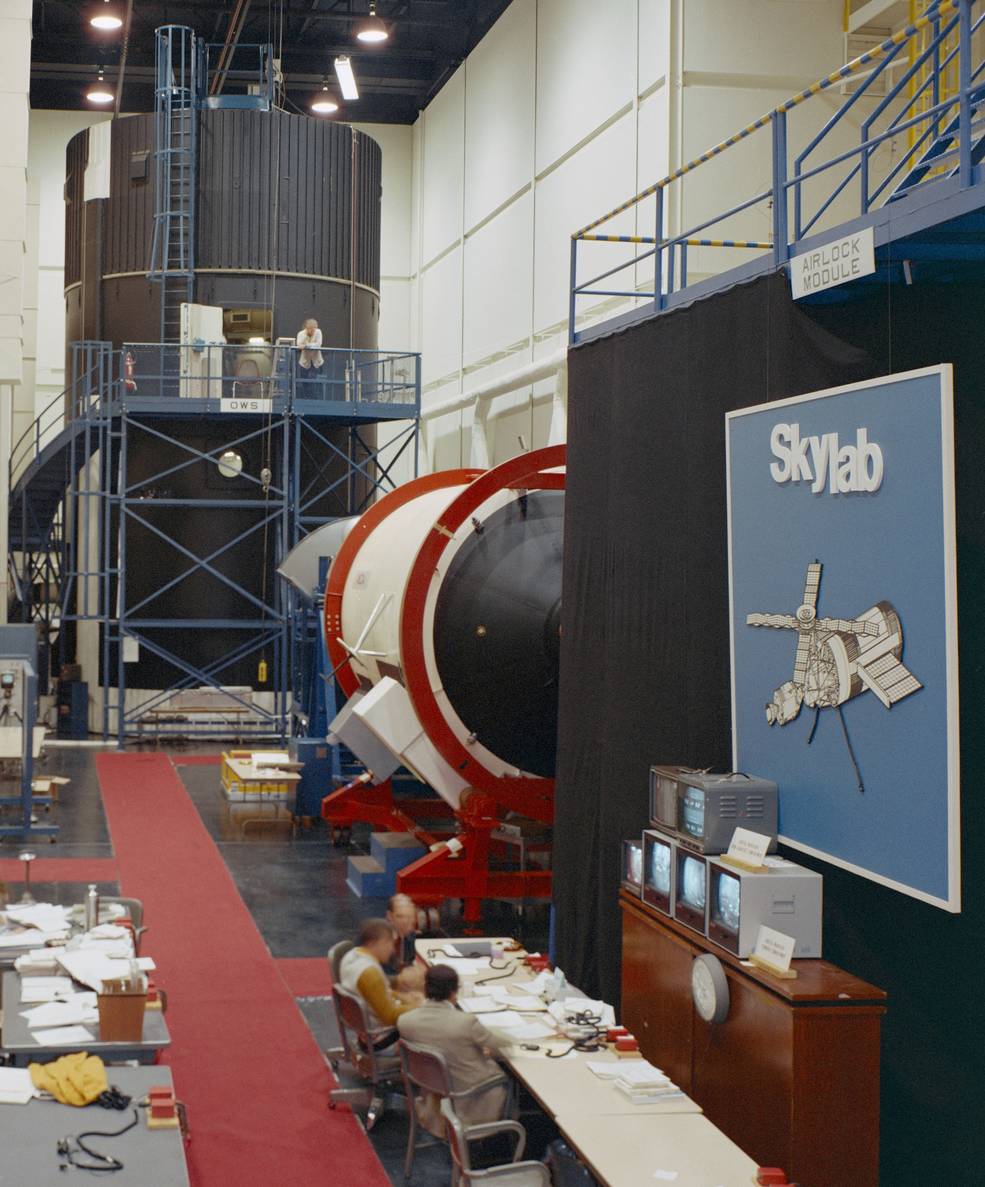
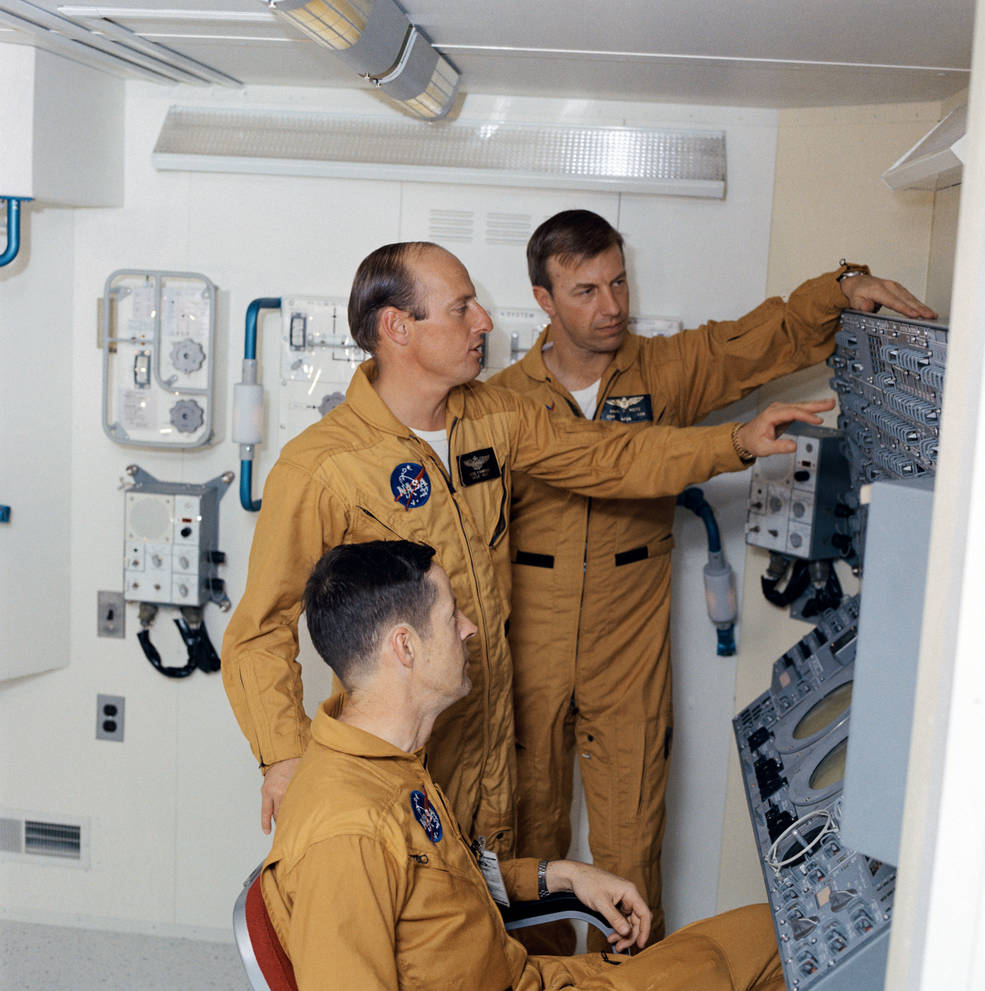
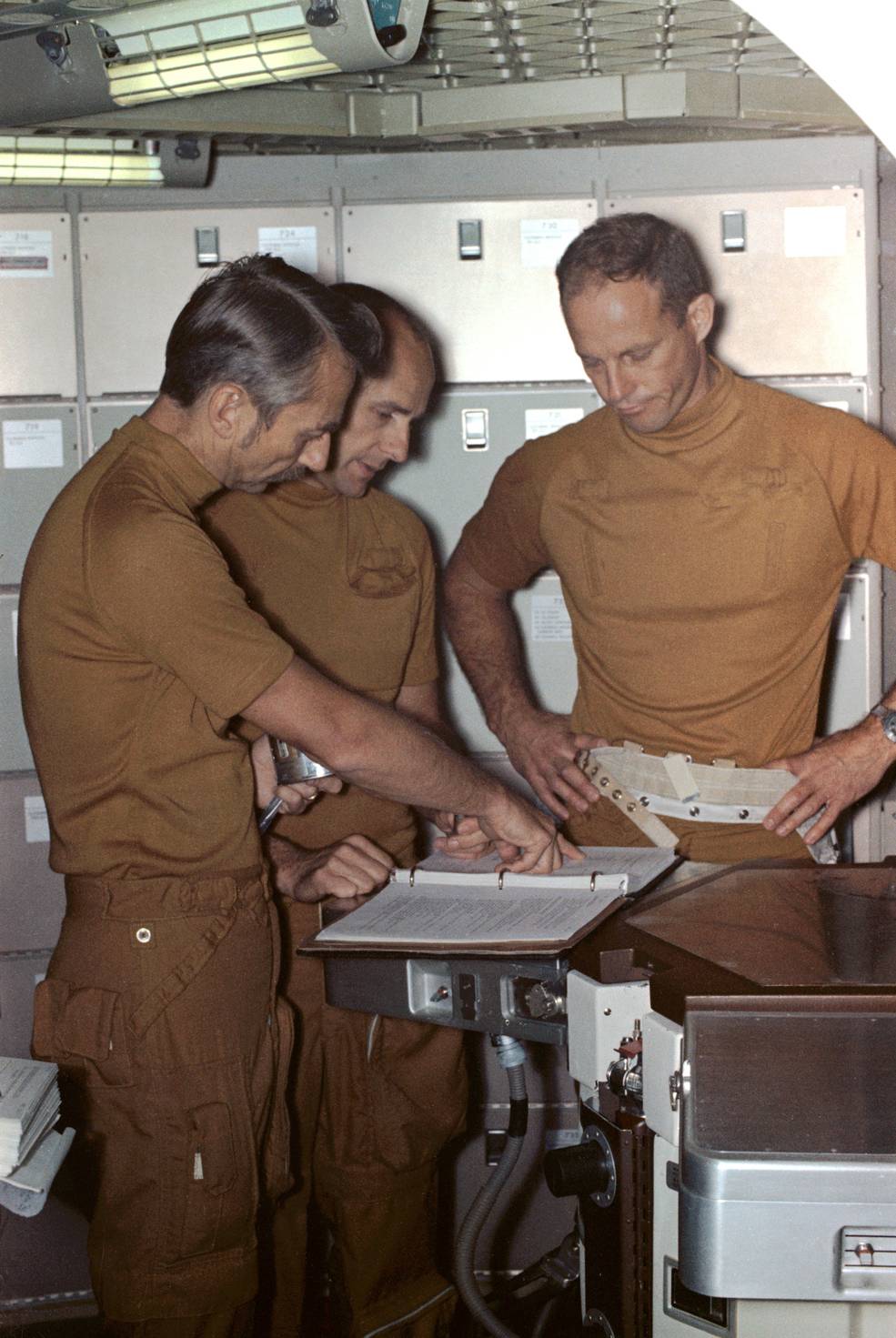
Left: Training mockups of the Skylab space station’s components, including the Orbital Workshop,
background, and the Multiple Docking Adapter, foreground, in November 1972. Middle: The Skylab-2
crew of Joseph P. Kerwin, left, Charles “Pete” Conrad, and Paul J. Weitz training in the Skylab
Apollo Telescope Mount simulator in January 1972. Right: Skylab-3 astronauts Owen K. Garriott,
left, Alan L. Bean, and Jack R. Lousma at the wardroom in the Skylab Orbital Workshop
trainer in July 1973.
To support the Skylab Program, America’s first space station in the early 1970s, full-scale, high-fidelity trainers and simulators of its components were installed in Building 5’s south wing in late 1971. The astronauts assigned to Skylab began using the trainers in early 1972 and they were used by all nine prime Skylab crew members as well as the six backups. Today, the Skylab trainers are on display at Space Center Houston.
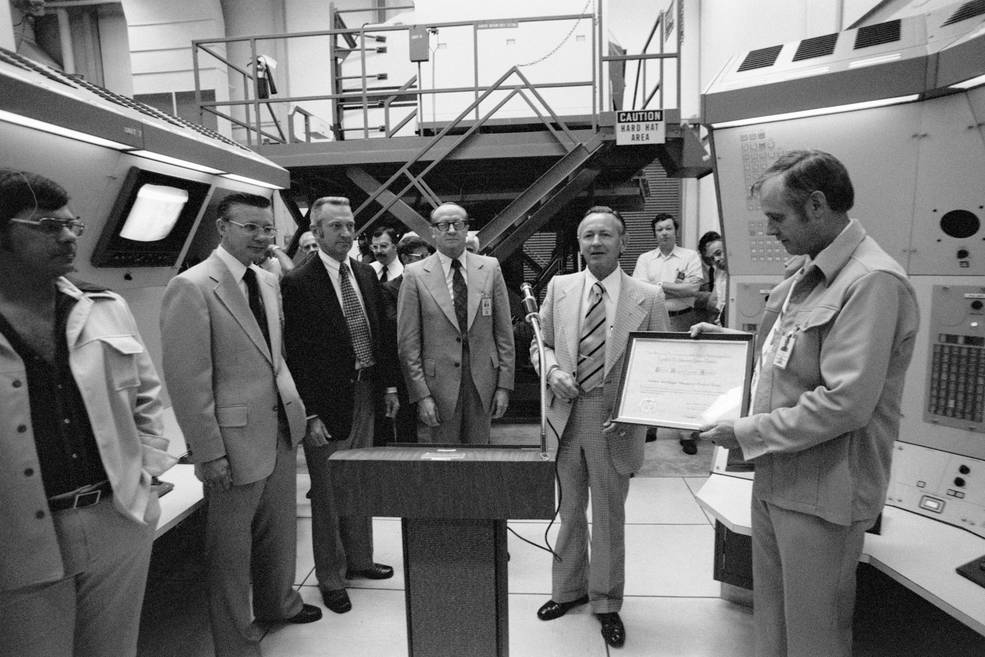
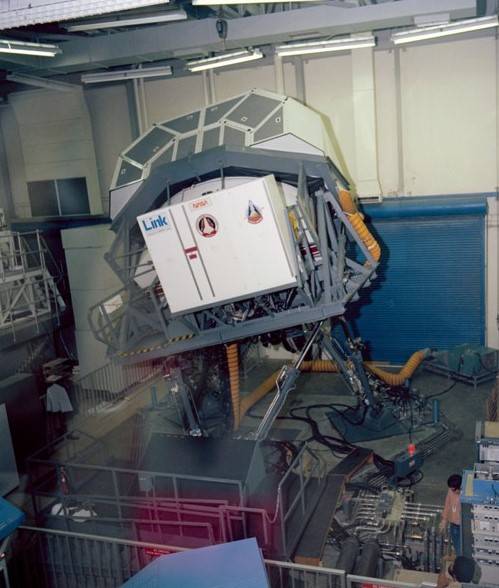

Left: Director of NASA’s Johnson Space Center in Houston Christopher C. Kraft, second from right, accepting
the shuttle simulators in October 1976. Middle: The shuttle Motion Base Simulator in April 1980.
Right: The shuttle Fixed Base Simulator.
Between 1976 and 1978, the MSTF underwent renovations to prepare it to support the Space Shuttle Program. The Motion Base Simulator (MBS) was built in 1976 to support the Approach and Landing Tests (ALT) using space shuttle Enterprise. The Fixed Base Simulator (FBS) was added and the MBS modified to support the first four space shuttle missions. The two simulators were first used to support flight crew training for the STS-1 mission on Jan. 9, 1979. The MBS included a full-scale replica of the forward flight deck of a space shuttle orbiter. The orbiter’s windows were replaced by windows that simulated views during various phases of the flight. The MBS’ motion systems provided a realistic simulation of the space shuttle’s movements. The FBS consisted of two levels, replicating the overall shape of the orbiter’s flight deck and middeck. The middeck was not high-fidelity, as it lacked the galley, the waste collection system, and the airlock hatch, but the flight deck was an exact replica of the orbiter and unlike the MBS included the aft flight deck.
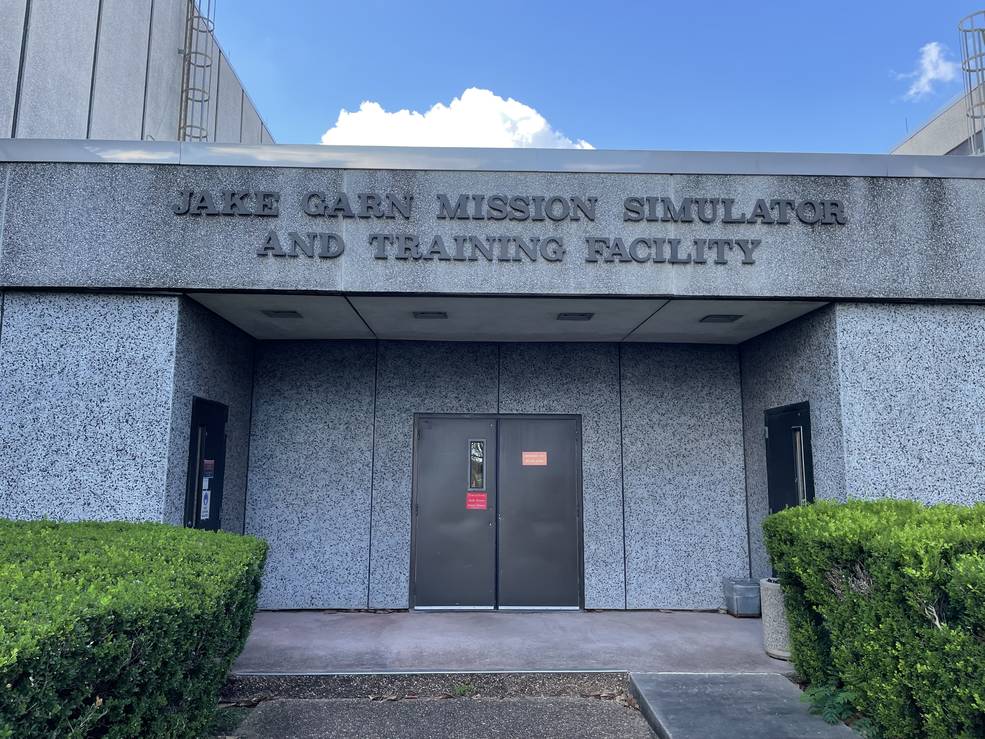
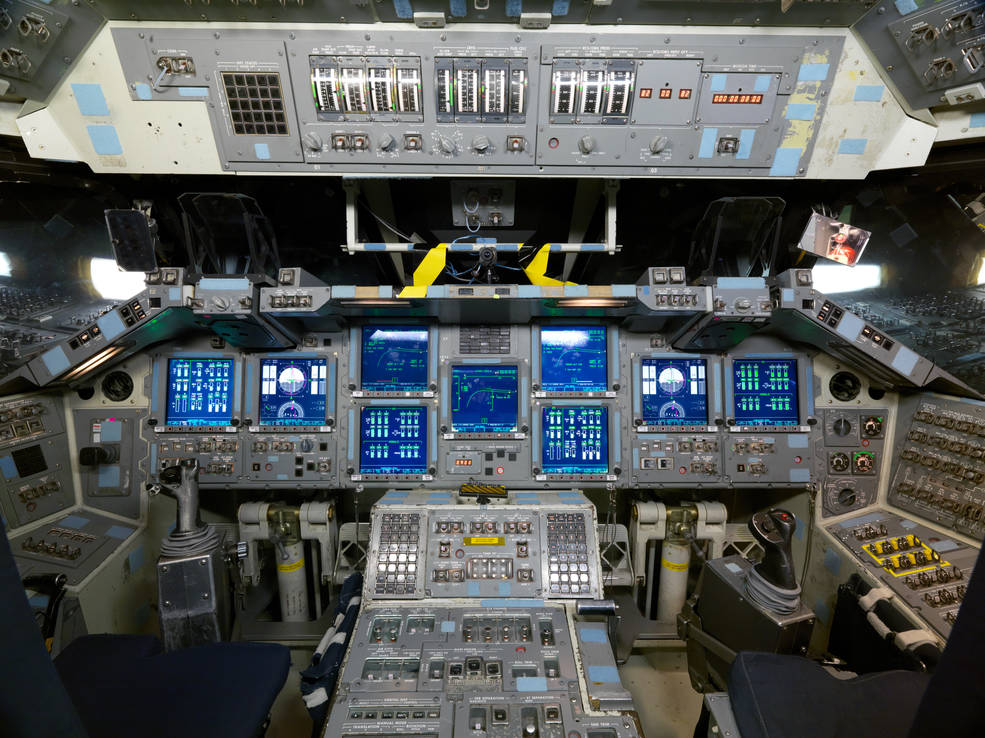
Left: The Mission Simulation and Training Facility was named after Senator and STS-51D crew
member Jake Garn in December 1992. Right: The cockpit of the Mobile Base Simulator prior
to its retirement in 2011 following the final space shuttle mission.
In December 1992, the MSTF was named in honor of Senator Jake Garn, a crew member aboard STS-51D in April 1985. Following the end of the space shuttle program, the shuttle mission simulator was moved to Texas A&M University in College Station, Texas, for use by faculty and students. In 2021, the simulator returned to Houston for restoration and display at the Lone Star Flight Museum at Ellington Airport. The simulator trained hundreds of astronauts for flights aboard the space shuttle during its 34-year operational life.
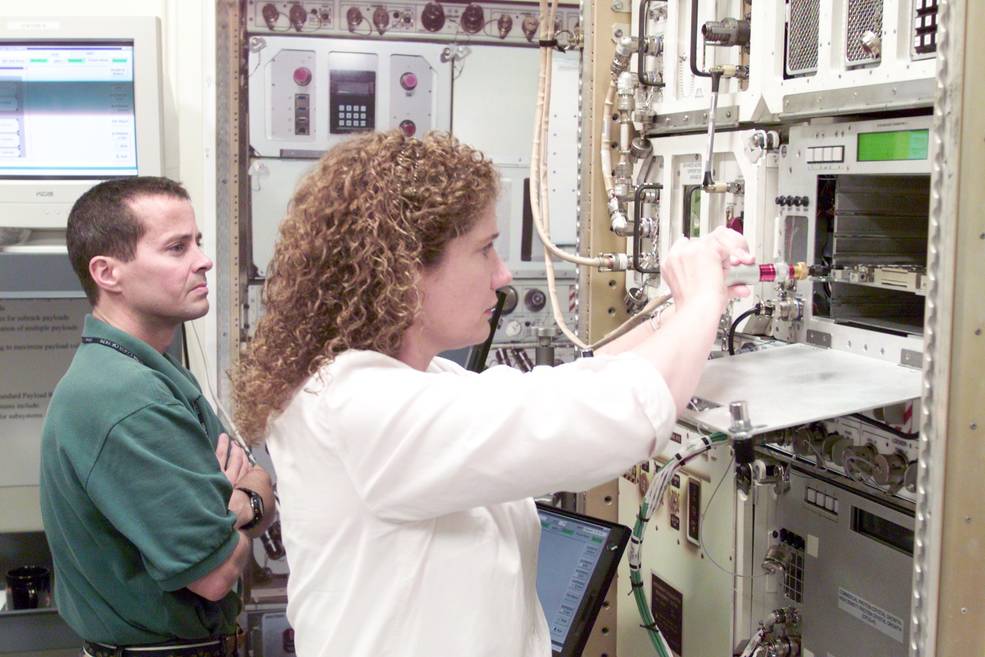
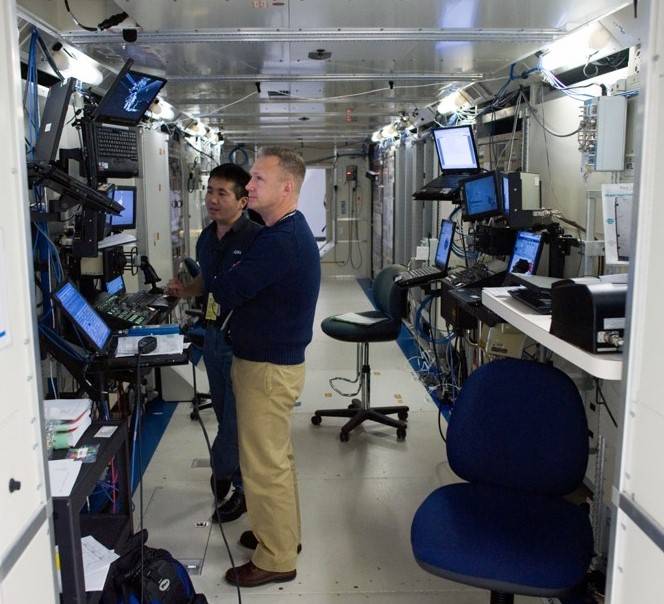
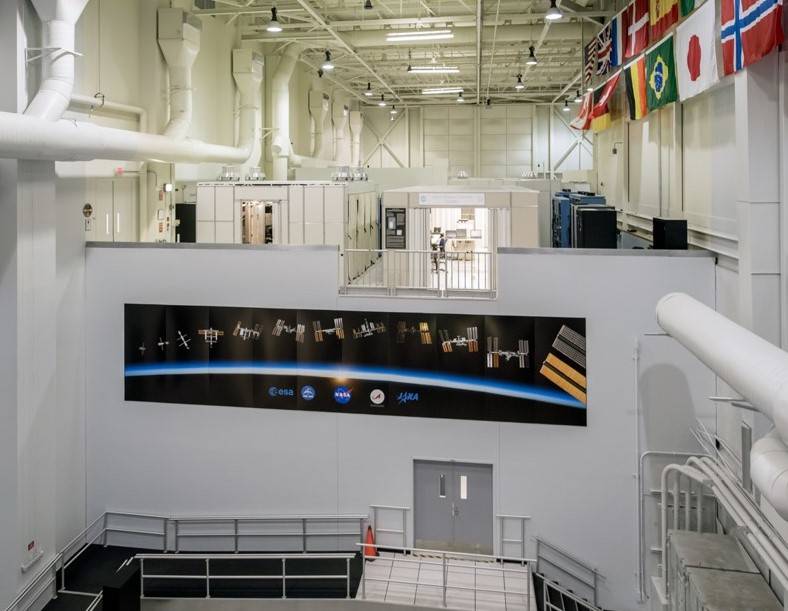
Left: International Space Station Expedition 2 flight engineer Susan J. Helms, right, training on an
EXPRESS payload in the Space Station Training Facility (SSTF) in September 2000, as her
backup Daniel W. Bursch looks on. Middle: Expedition 18/19/20 flight engineer Koichi
Wakata of the Japan Aerospace Exploration Agency and STS-127 pilot NASA astronaut
Douglas G. Hurley participate in a joint simulation using the shuttle Fixed Base
Simulator and the SSTF in September 2009. Right: Overview of the SSTF
at its 20th anniversary in December 2016.
An addition to the south wing of Building 5, the Space Station Training Facility (SSTF), was completed in July 1991 to support astronaut training for Space Station Freedom, and then the International Space Station. The facility was dedicated in February 1992 and training began in 1996. The SSTF contains high-fidelity simulators of the space station modules with the capability to interface with the Mission Control Center. High-fidelity mockups of space station system and payload racks are also located in the SSTF.
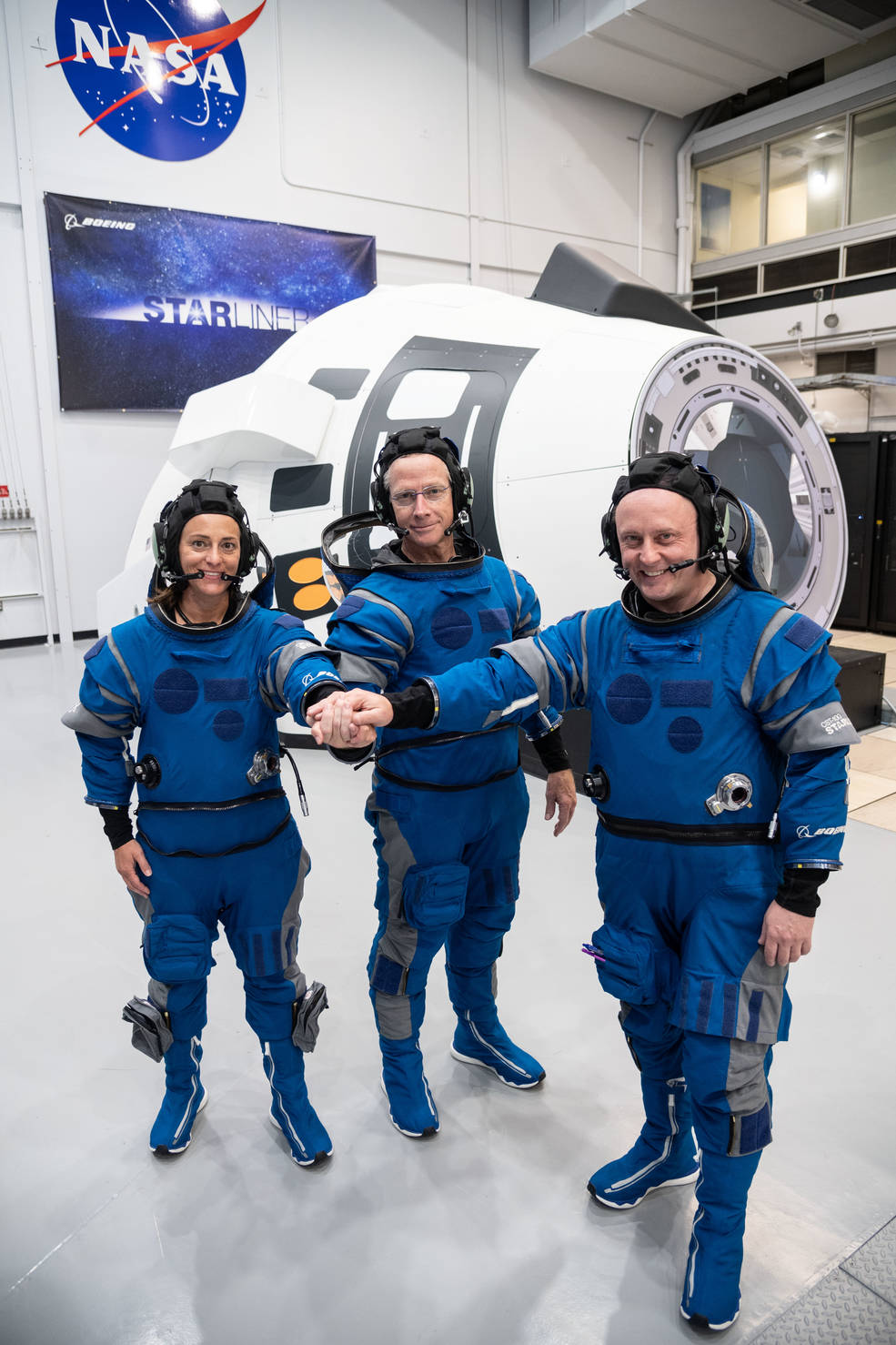
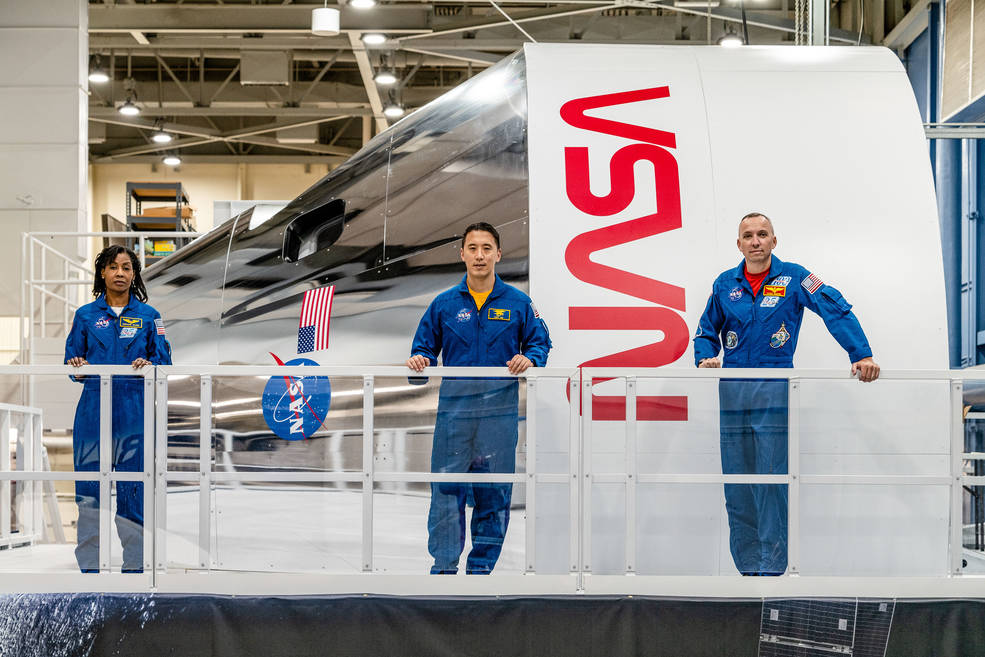
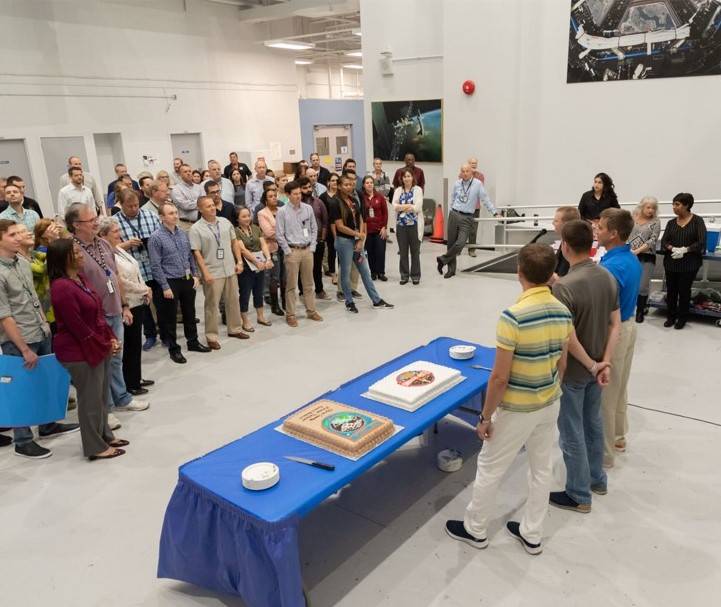
Left: The original crew of the Boeing Starliner Crew Flight Test mission NASA astronauts
Nicole A. Mann, left, Christopher J. Ferguson, and E. Michael Fincke pose in front of
the Starliner simulator in the Space Station Training Facility (SSTF) in August 2019.
Middle: NASA astronauts Stephanie D. Wilson, left, Jonny Kim, and Randolph J. Bresnik
in front of the Orion simulator in December 2020. Right: Cake cutting ceremony in
the SSTF high bay for the Expedition 63 crew in October 2019.
With a storied history of training astronauts since the Gemini program, the MSTF is also preparing for the future. The first two Crew Part Task Trainers for the Boeing CST-100 Starliner commercial crew transport spacecraft arrived at the MSTF in September 2016. On Jan. 11, 2017, the Boeing Mission Simulator for Starliner training arrived in the MSTF, located in the room where the space shuttle MBS once resided. The Orion simulator arrived in the MSTF in December 2020 to prepare astronauts for Artemis missions to the Moon. On a less technical aspect, the SSTF’s high bay is the location of the traditional crew cake cutting ceremony, marking the end of formal training before crews depart for their launch sites and ultimately the space station in orbit.
Space Vehicle Mockup Facility (SVMF)
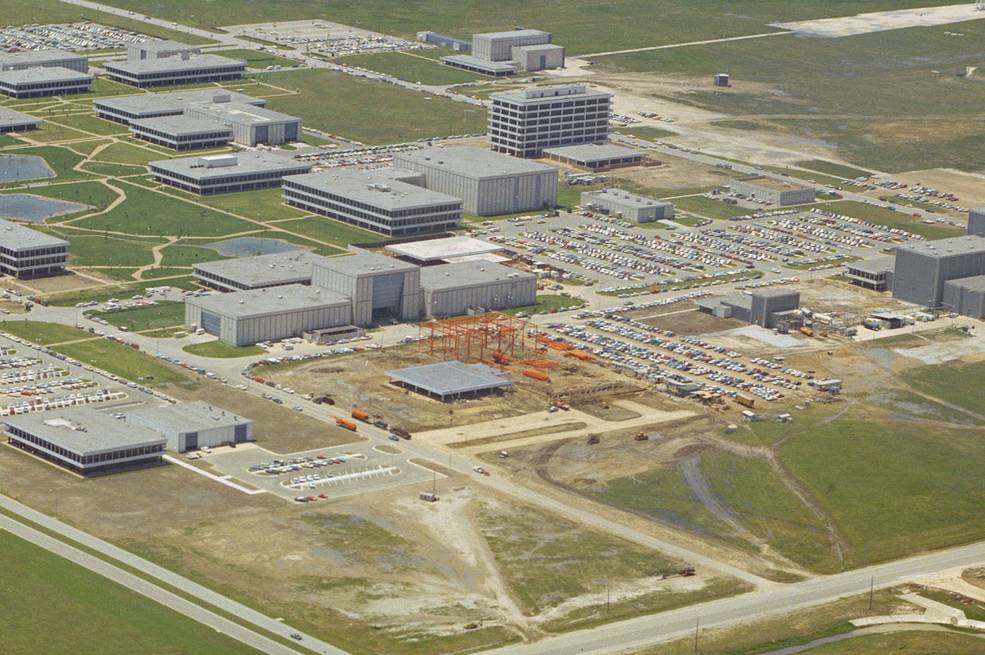
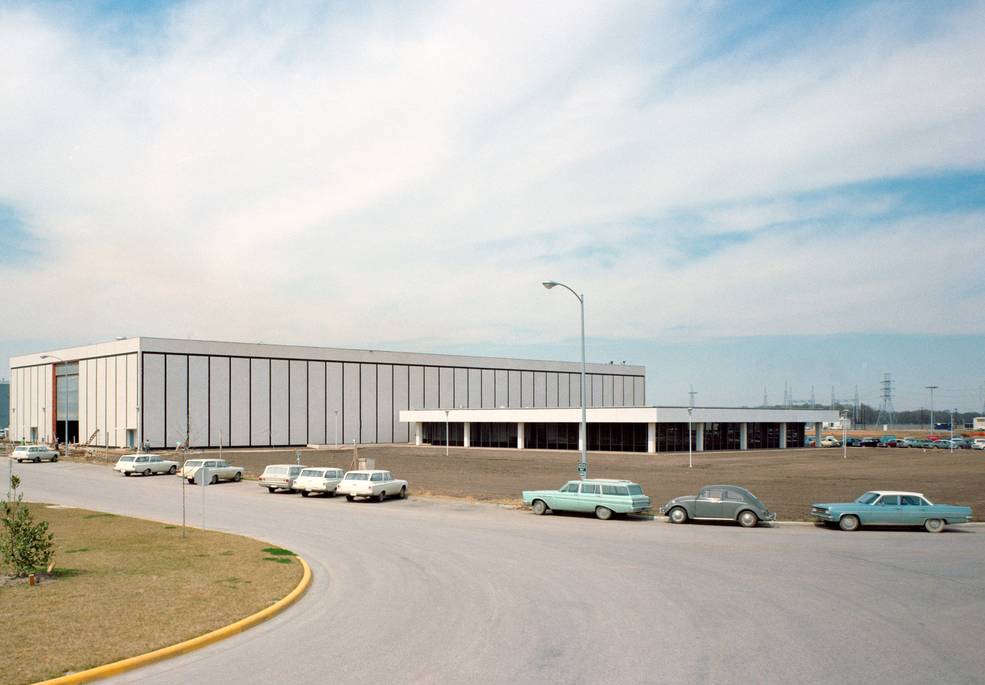
Left: Aerial view of the Manned Spacecraft Center, now NASA’s Johnson Space Center in
Houston, in 1966 with Building 9 under construction, at center of photograph.
Right: Exterior view of the nearly-completed Building 9 in February 1967.
Construction of MSC’s Building 9 began in December 1965 and finished in March 1967, part of the third phase of construction at the Clear Lake site. The building initially housed the Technical Services Facility.
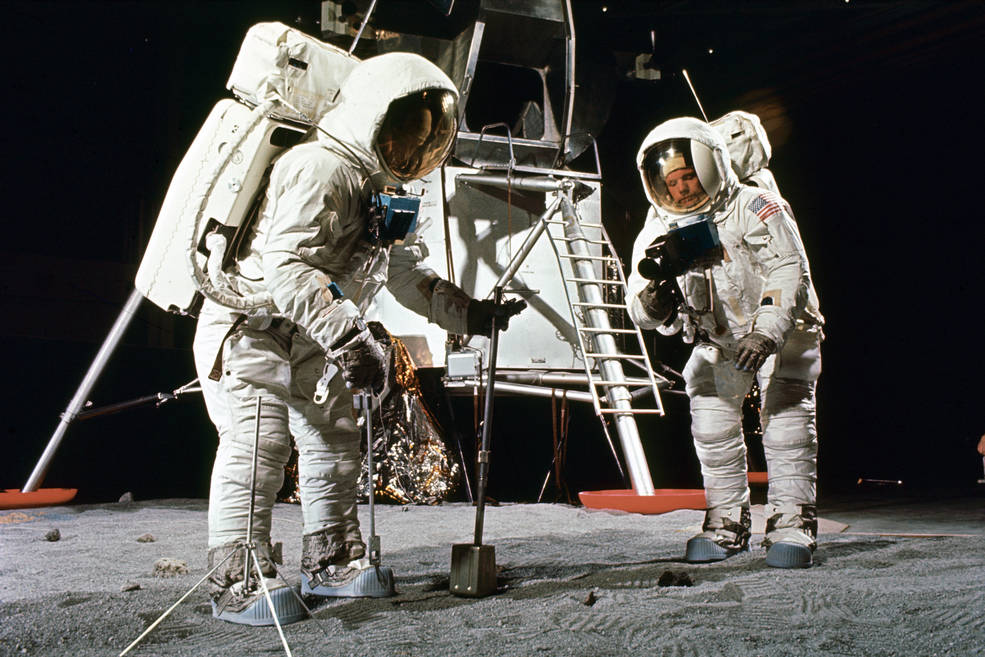
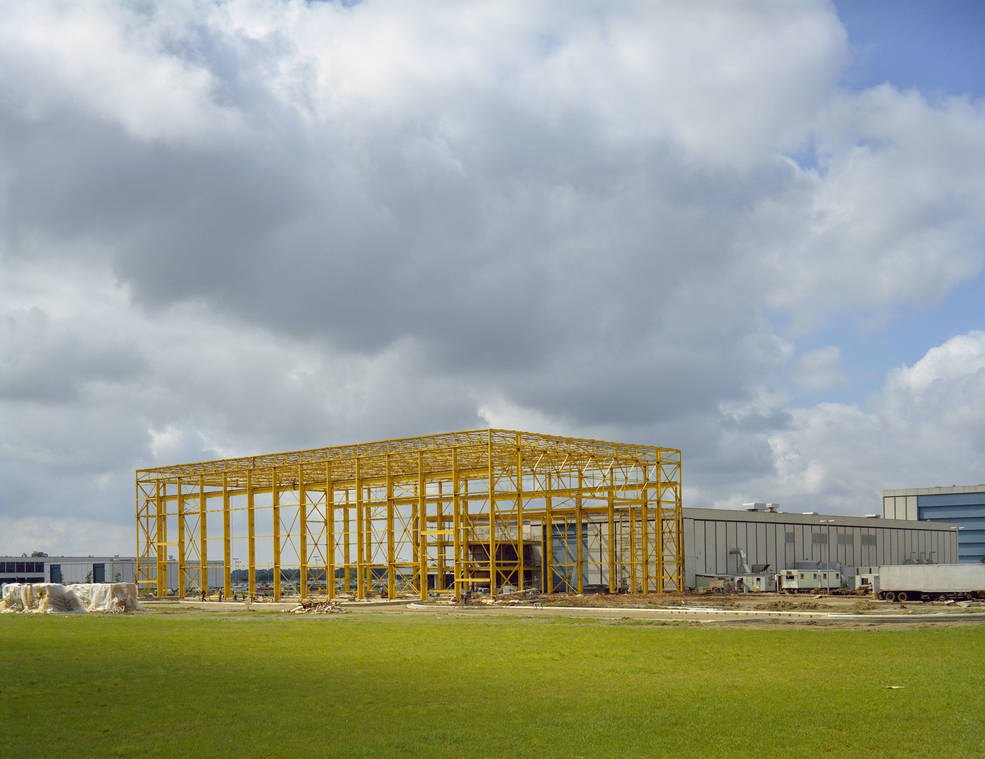
Left: Apollo 11 astronauts Edwin E. “Buzz” Aldrin and Neil A. Armstrong on Earth rehearsing
their lunar surface activities in April 1969. Right: Construction of the Building 9 addition
to house space shuttle mockups under construction in May 1974.
In April 1969, a portion of Building 9 was converted to a mock lunar surface scene, complete with a mockup of a Lunar Module. In this setting, Apollo 11 astronauts Neil A. Armstrong and Edwin E. “Buzz” Aldrin practiced their historic Moon walk, including setting up the surface science experiments. For the later Apollo missions, lunar surface training mostly shifted to NASA’s Kennedy Space Center in Florida. With the development of the space shuttle program in the 1970s, JSC needed a facility to house the large mockups required for astronaut training. Construction of the first addition to the north side of the existing facility, called Building 9A and housing the Mockup and Integration Laboratory (MAIL), was completed in September 1974.
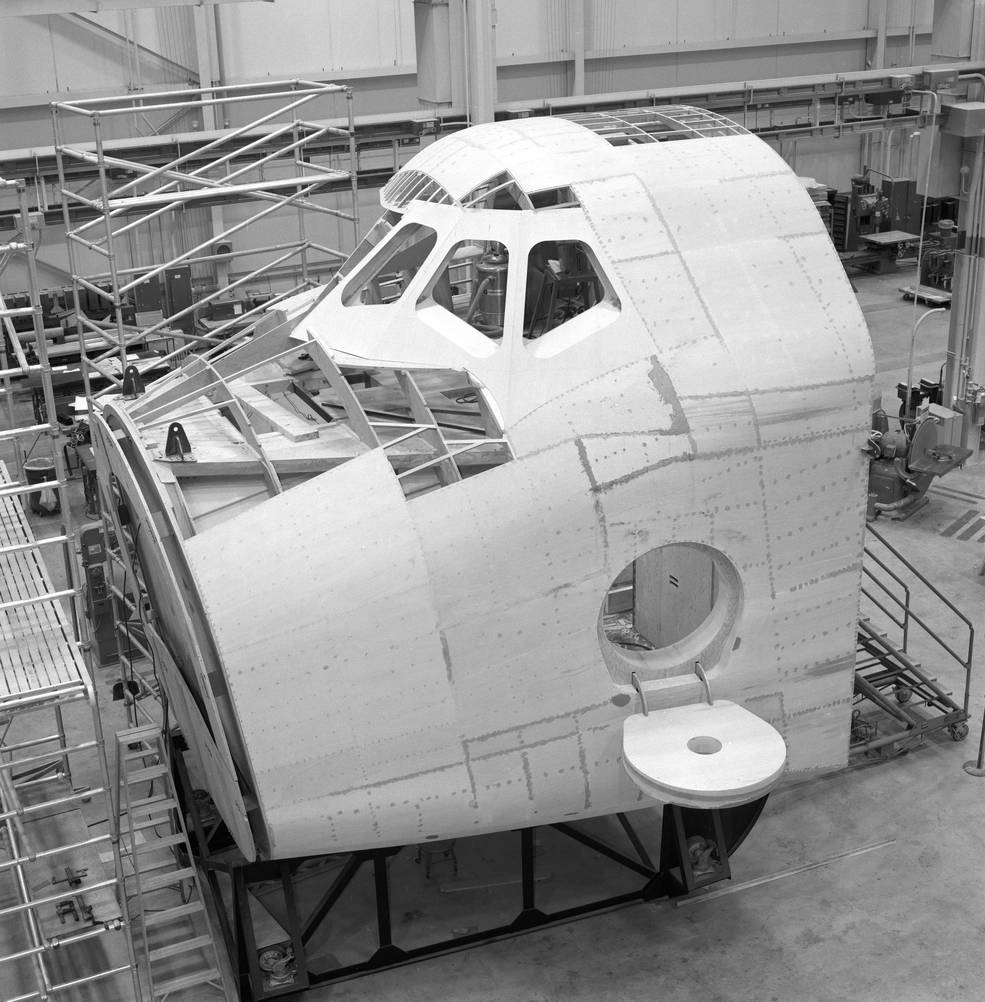
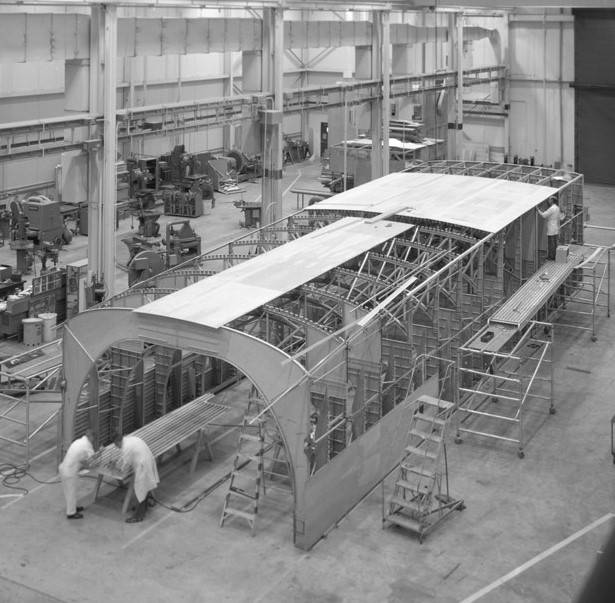
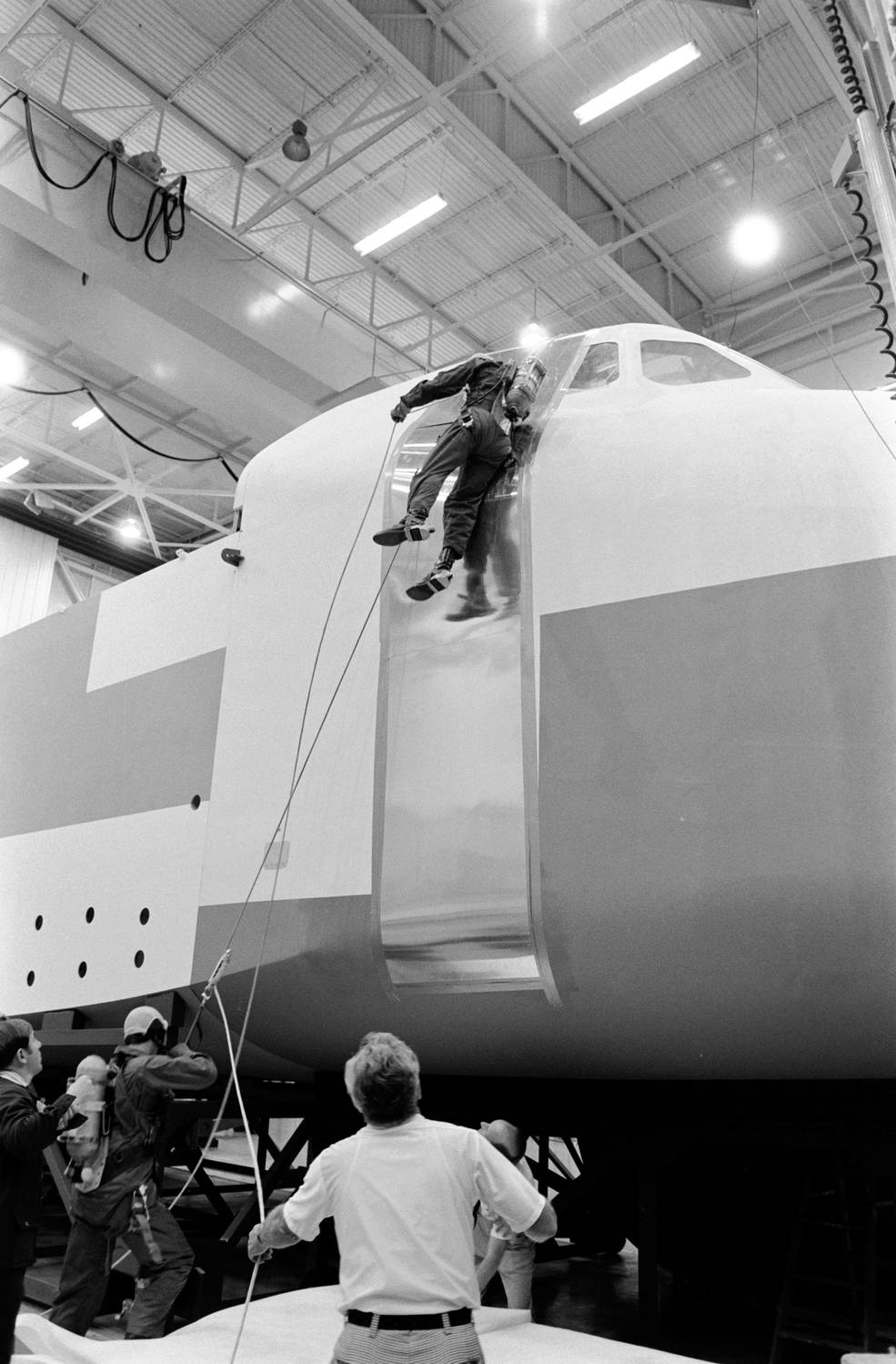
Left: Construction of the space shuttle Crew Compartment Trainer in November 1974. Middle: Construction of the
space shuttle orbiter midbody for the Full Fuselage Trainer in December 1974. Right: Astronaut Gerald P. Carr
practices emergency egress from the space shuttle mockup in Building 9A in March 1977.
In May 1974, workers in JSC’s Technical Services Division began construction of the first of the space shuttle mockups, the Crew Compartment Trainer (CCT), in the original part of Building 9. Workers towed them into the MAIL in Building 9’s newly-built north wing in January 1975. In 1976, they built the Full Fuselage Trainer (FFT), the largest mockup built by JSC. Astronauts began emergency egress training using the mockups in March 1977 to support the space shuttle Enterprise ALTs. Workers later installed an air-bearing floor to aid in the development of spacewalk equipment and techniques, and for training to handle masses in weightlessness. The facility, analogous to an air hockey table, uses compressed air passed through a perforated pad to create a cushion of air on which objects and astronauts ride to simulate a low-friction environment. For 35 years, these mockups trained hundreds of astronauts from many nations to prepare them for flights aboard the 135 missions of the space shuttle.
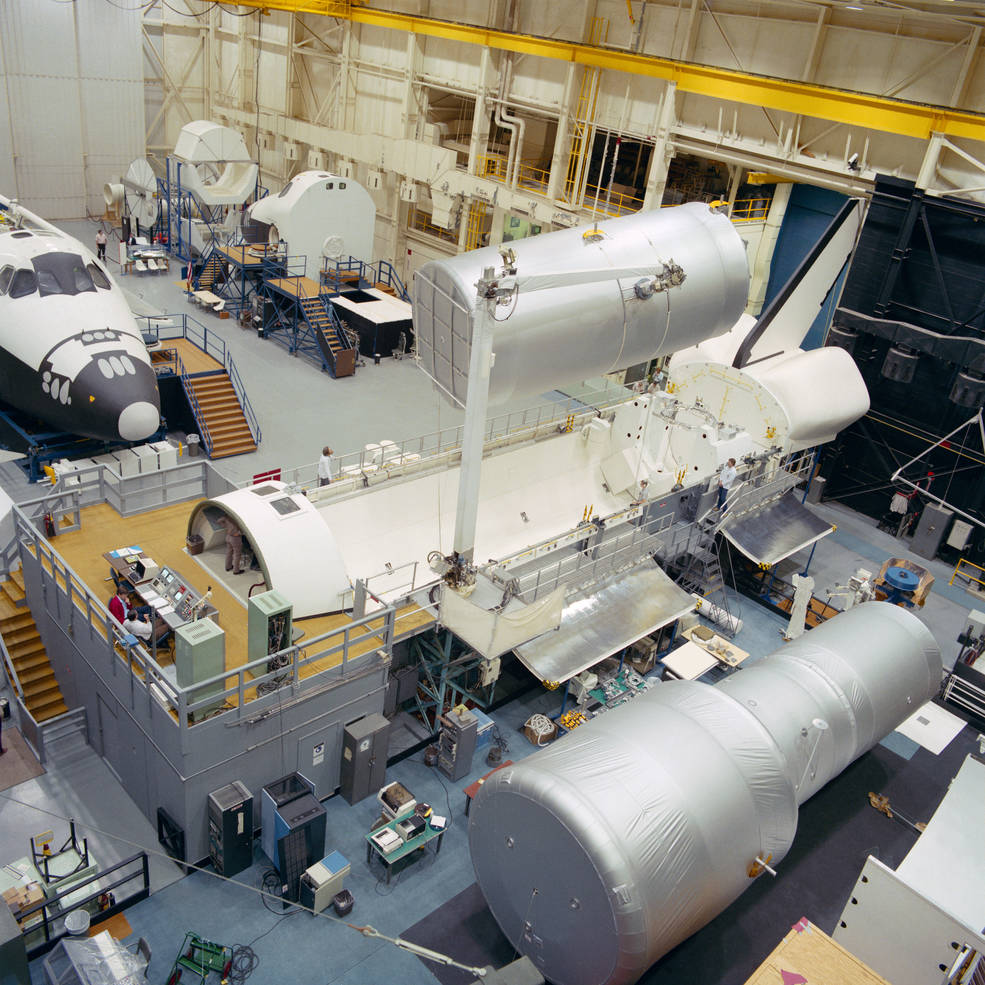
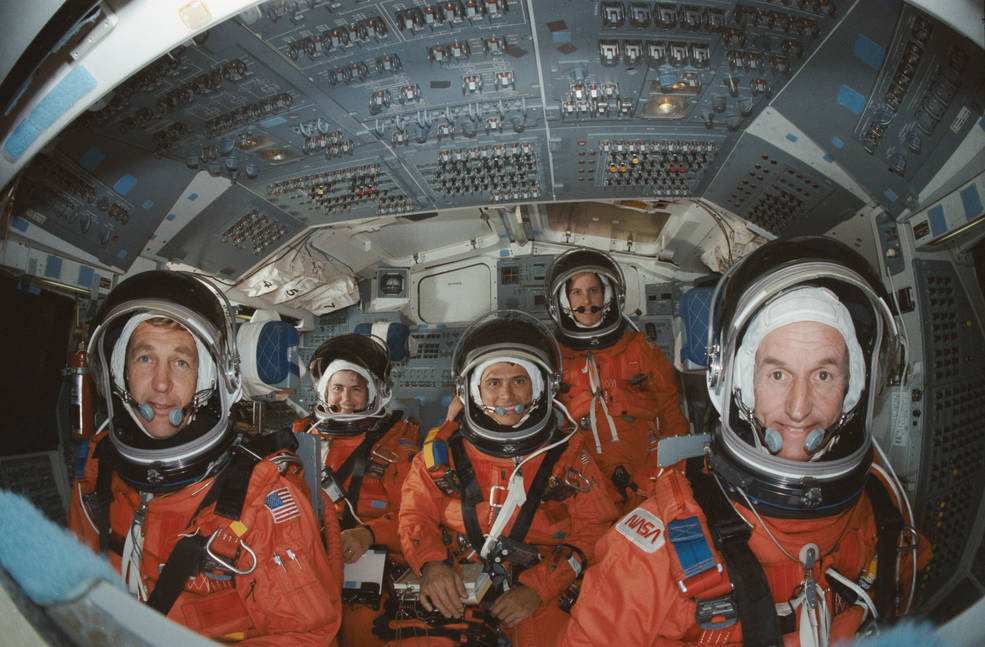
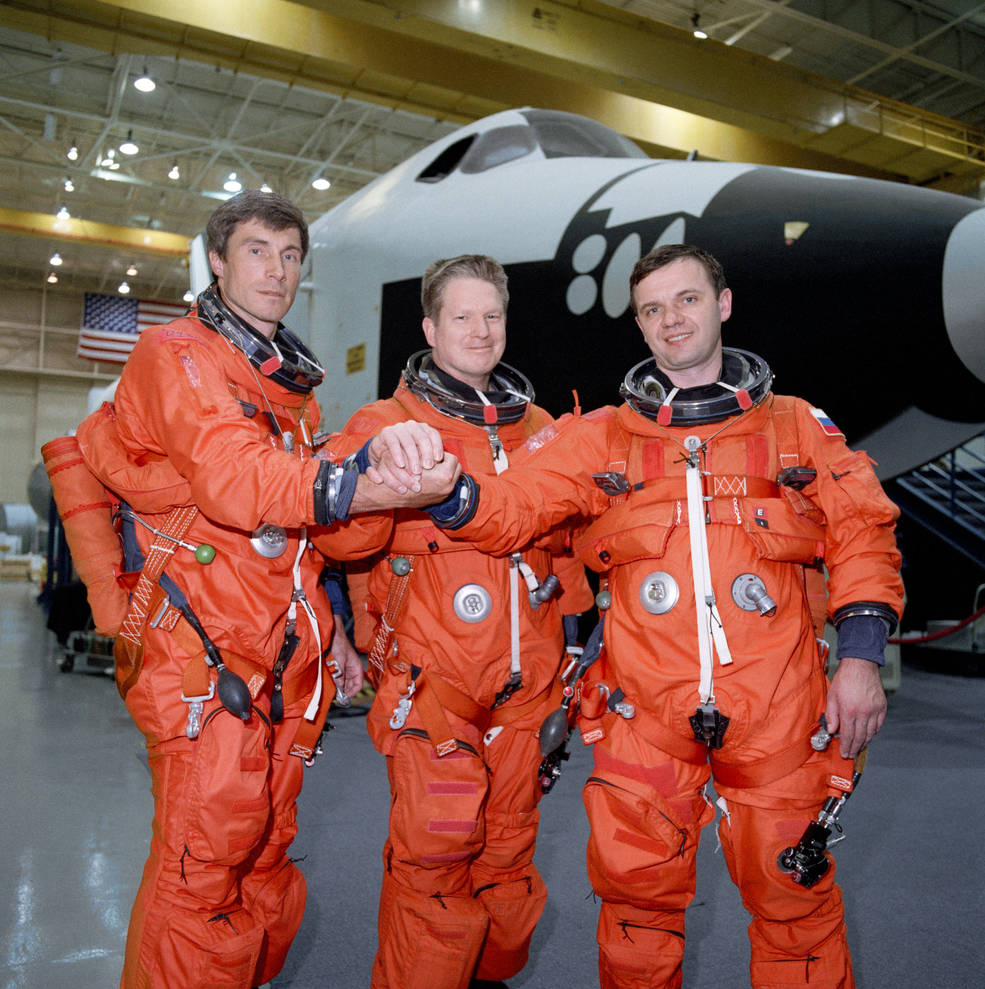
Left: The Mockup and Integration Laboratory (MAIL) in March 1984, showing Manipulator Development Facility
in the foreground, the shuttle remote manipulator system holding an inflatable mockup of the Long Duration
Exposure Facility; the Full Fuselage Trainer and two Crew Compartment Trainers (CCT) are visible in the
background. Middle: The STS-34 crew of Michael J. McCulley, left, Shannon W. Lucid, Franklin
R. Chang-Diaz, Ellen S. Baker, and Donald E. Williams during ascent and entry training in a CCT.
Right: International Space Station Expedition 1 crew of Sergey K. Krikalev of Roscosmos, left,
NASA astronaut William M. Shepherd, and Roscosmos cosmonaut Yuri P. Gidzenko during space
shuttle entry training in May 2000.
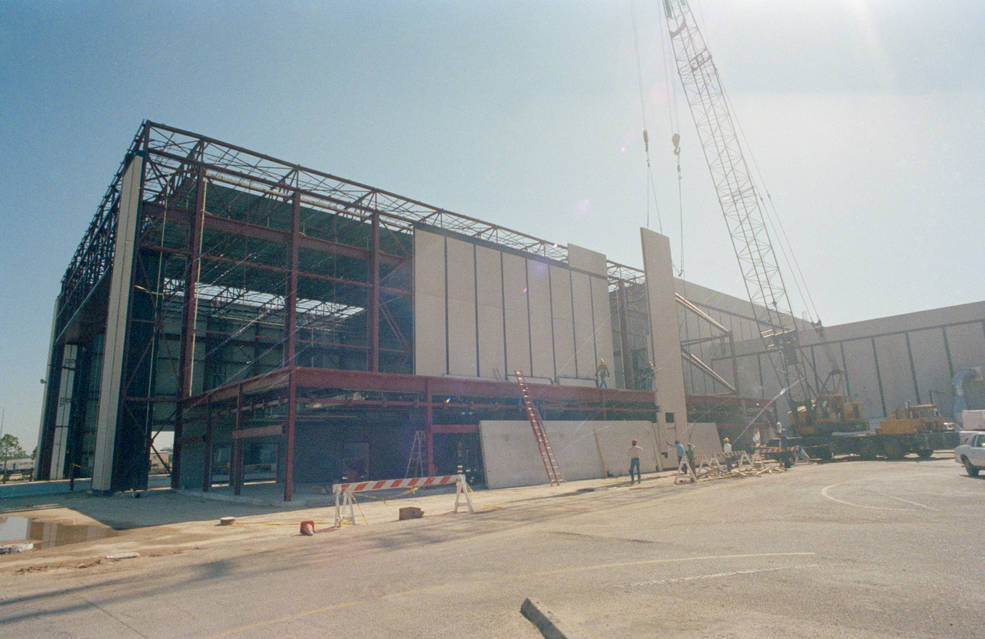
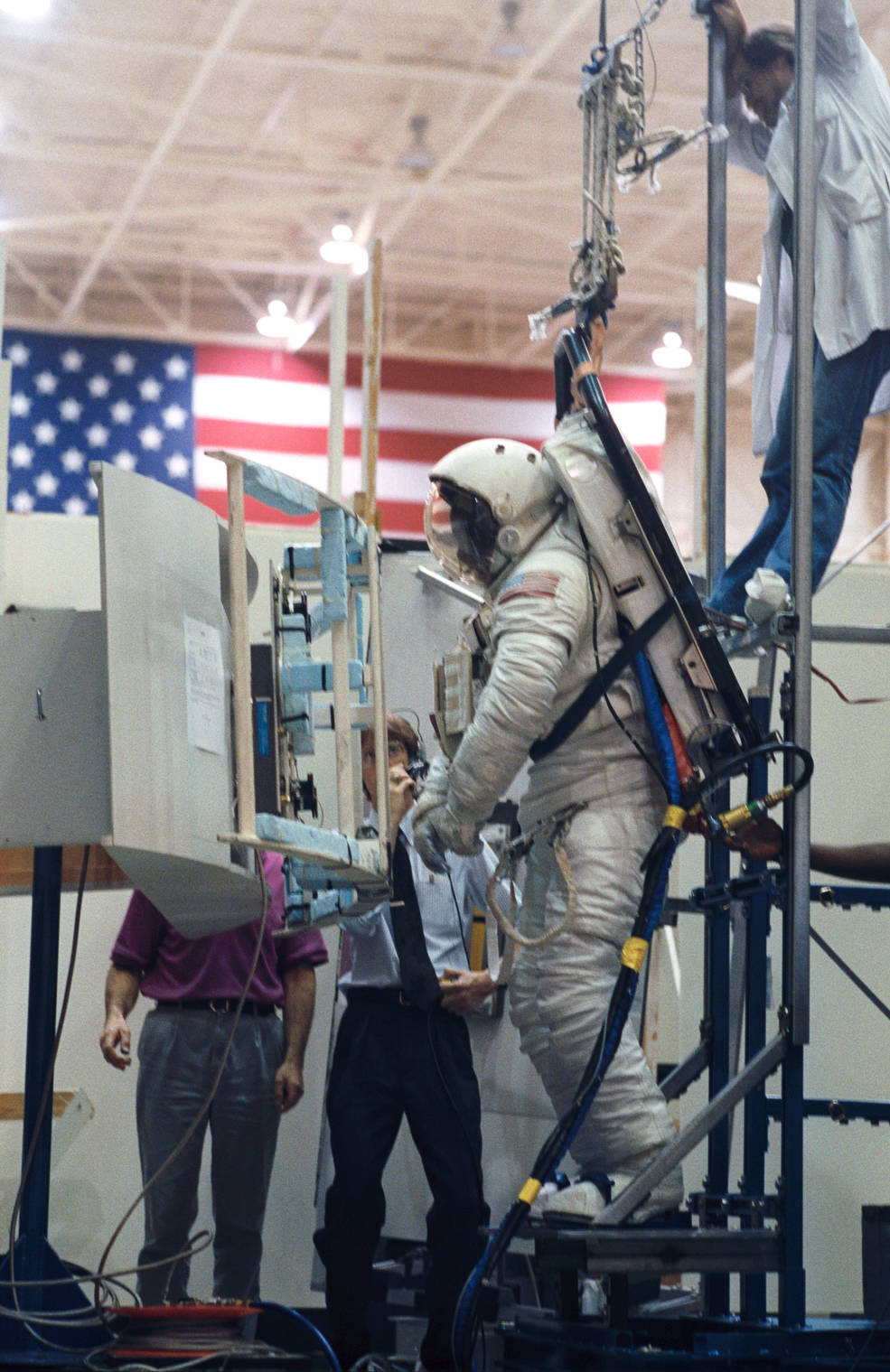
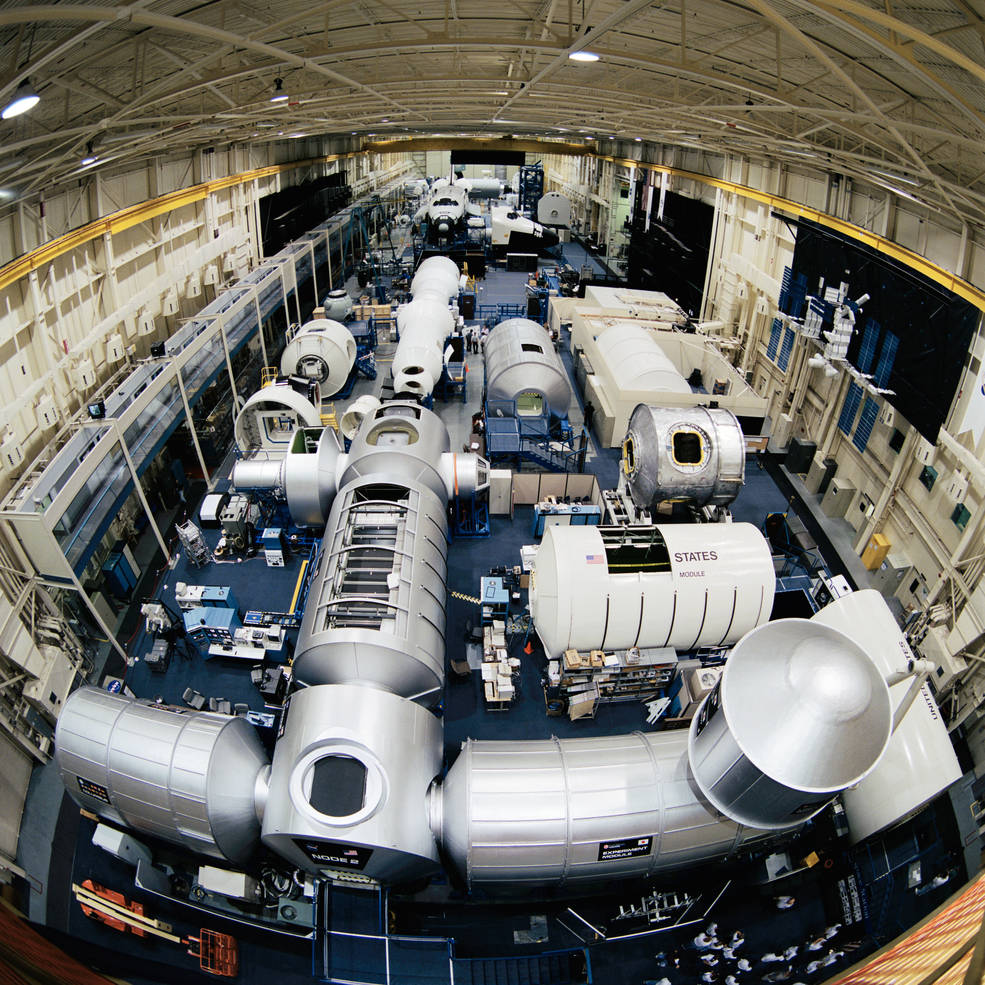
Left: The northwest addition to Building 9, to house the space station module mockups, under construction
in 1988. Middle: Astronaut Jeffrey A. Hoffman practices working on the Hubble Space Telescope’s Wide
Field Camera on the air-bearing floor in Building 9. Right: Overview of the Space Vehicle Mockup Facility in
August 1999, with space station mockups in the foreground and space shuttle mockups in the background.
An extension on the northwest side of the existing Building 9, begun in 1986 and completed in 1988, received mockups of Space Station Freedom, the forerunner of today’s International Space Station. The facility received a new designation with the advent of the space station era —the Space Vehicle Mockup Facility (SVMF). The northwest portion now contained mockups of space station modules with the space shuttle mockups remaining in their original place. The final training sessions in the space shuttle mockups took place in June 2011 to support the STS-135 mission, the last flight of the program.
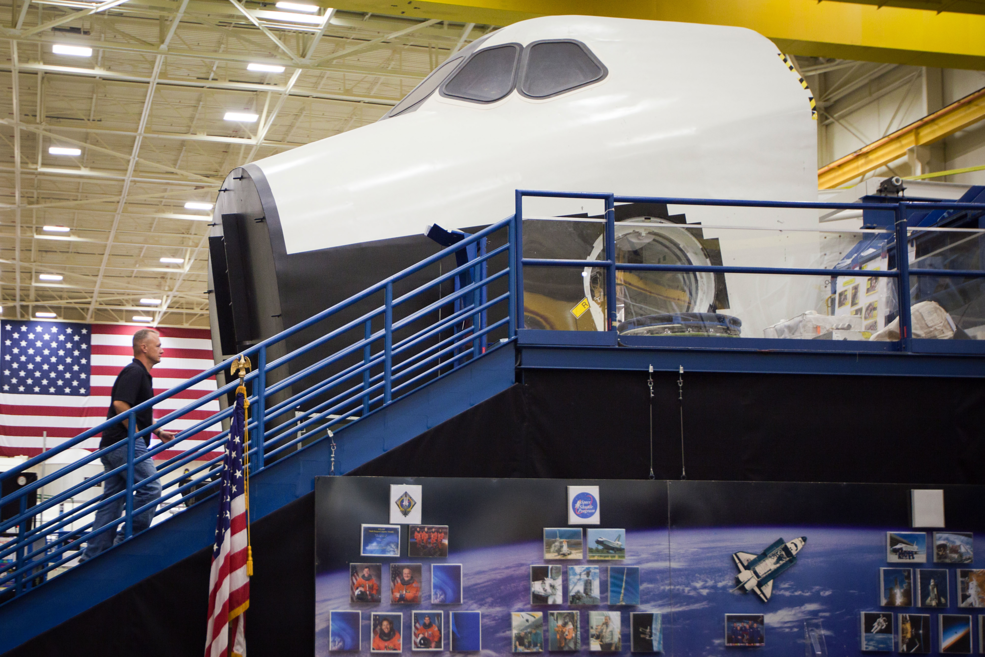
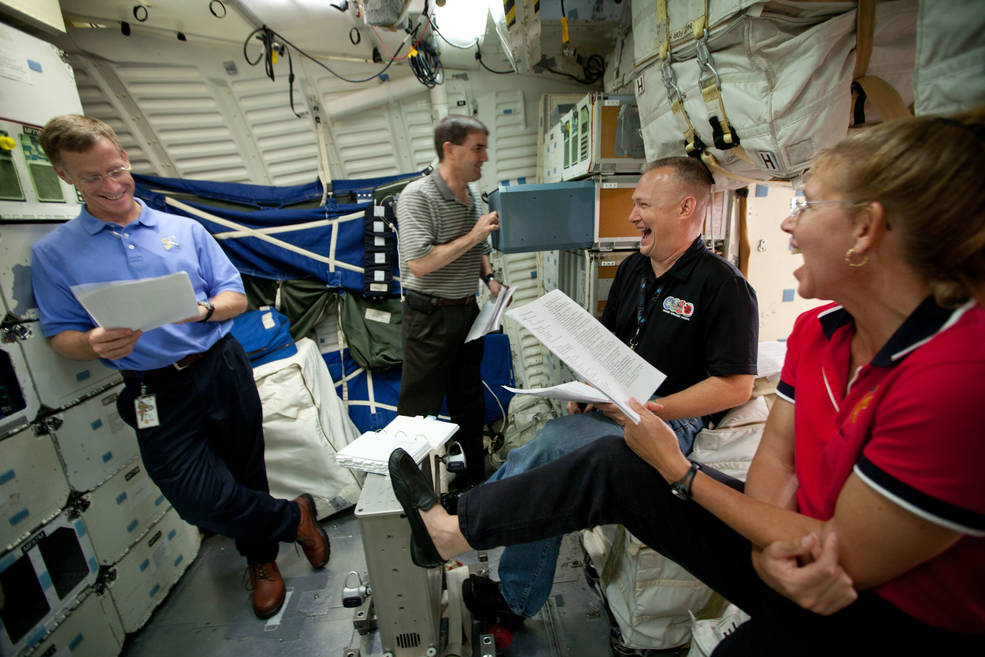
Left: The space shuttle Crew Compartment Trainer (CCT) prepares to host the last training
session in June 2011. Right: Inside the CCT, STS-135 astronauts Christopher J. Ferguson, left,
Rex J. Walheim, Douglas G. Hurley and Sandra H. Magnus complete the final
training session in June 2011.
After the end of the space shuttle era, most of the mockups were sent to museums. The FFT is now at the Seattle Museum of Flight and one of the CCTs is at National Museum of the Air Force in Dayton, Ohio. The other CCT remained in the SVMF.
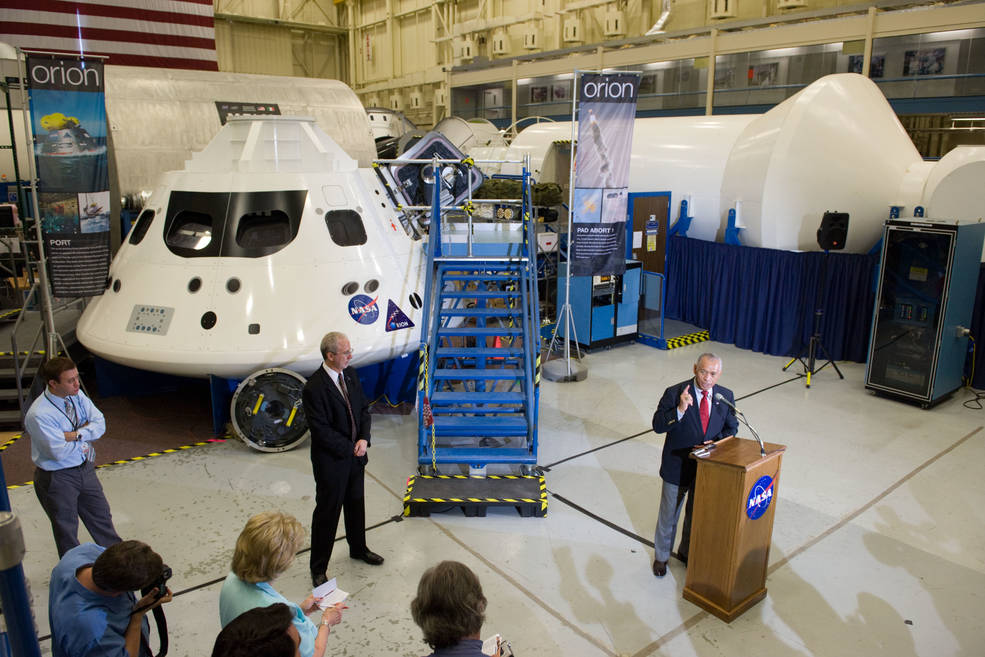
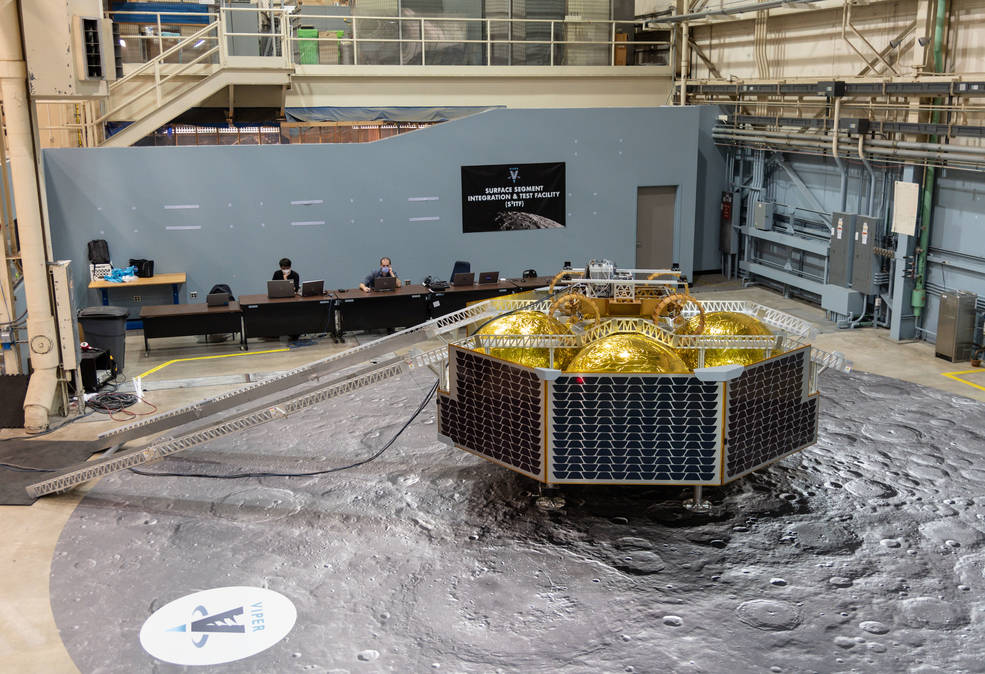
Left: In September 2011, NASA Administrator Charles F. Bolden, right, speaks in front of the Orion
mockup in Building 9, as Orion Program Manager Mark S. Geyer looks on. Right: Egress testing of
the Volatiles Investigating Polar Exploration Rover (VIPER) in Building 9 in April 2021.
Following the end of the space shuttle program in 2011, managers conducted a shuttle retirement and reconfiguration program in the SVMF to optimize the available space. In the place of the shuttle mockups, a training version of the Orion capsule arrived in 2011. The area is also used for testing future projects such the Volatiles Investigating Polar Exploration Rover (VIPER) that will search for water ice at the lunar south pole, a collaboration with NASA’s Ames Research Center in California’s Silicon Valley.
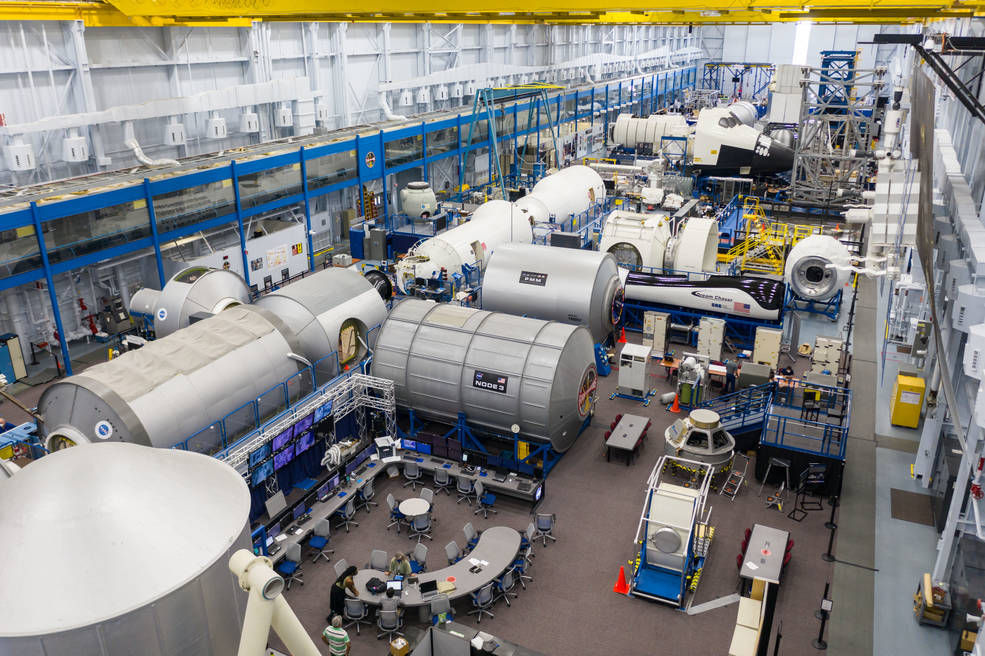
Overview of the Space Vehicle Mockup Facility in Building 9 in September 2020.
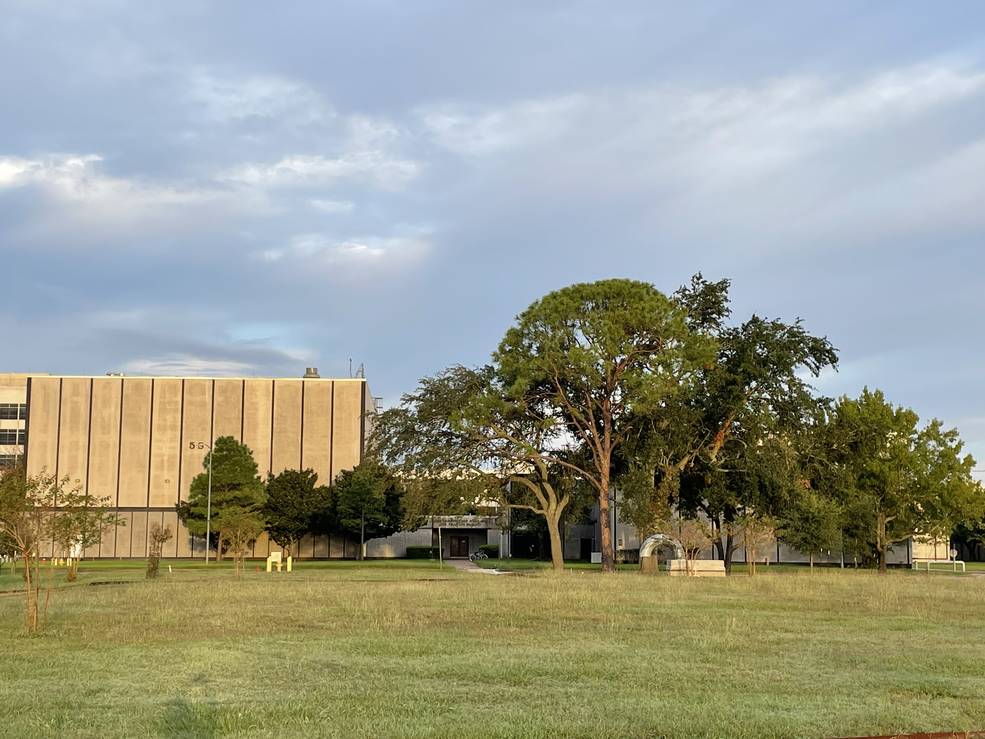
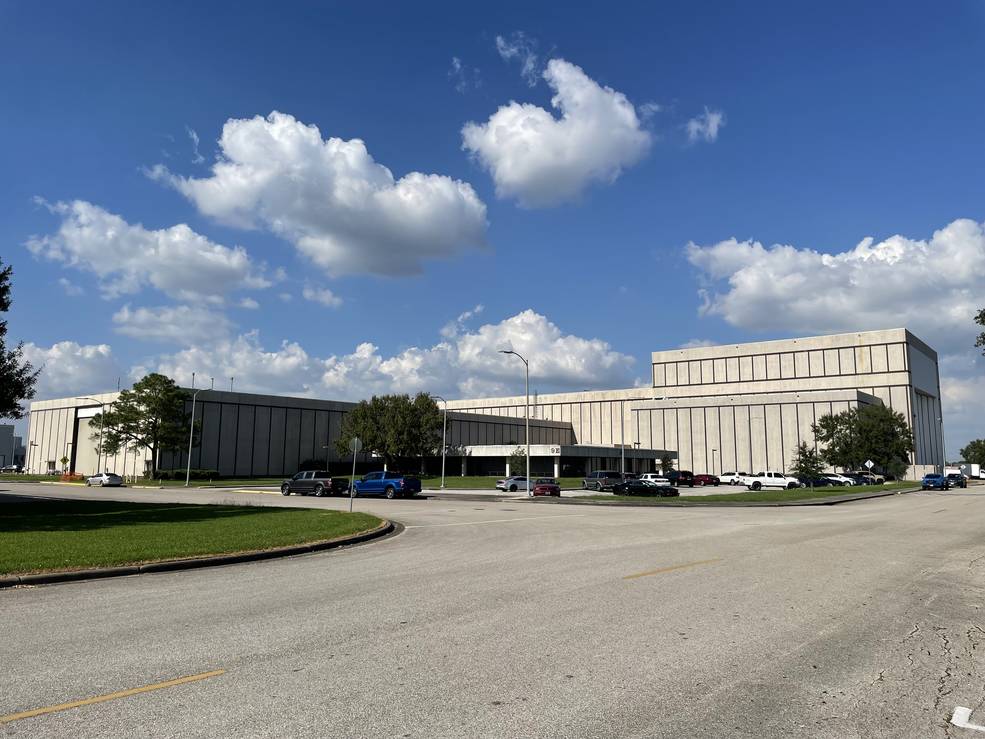
Left: Exterior view of Building 5 in October 2021. Right: Exterior view of Building 9 in October 2021.
To be continued…

























